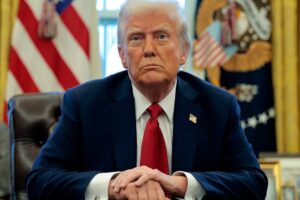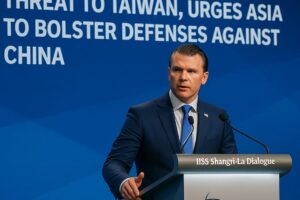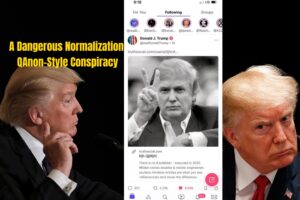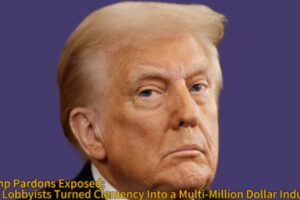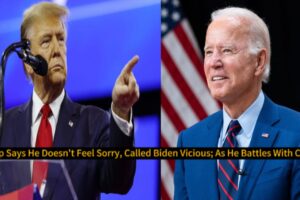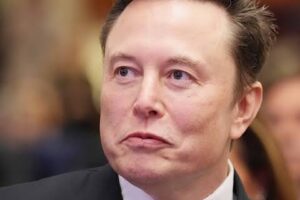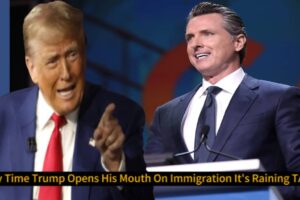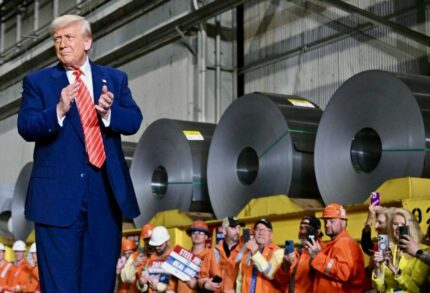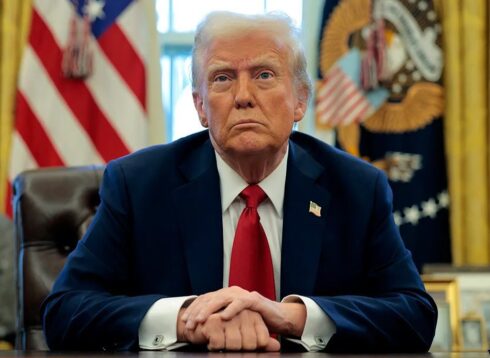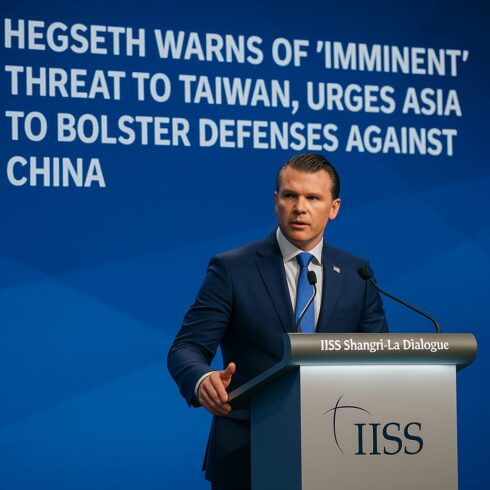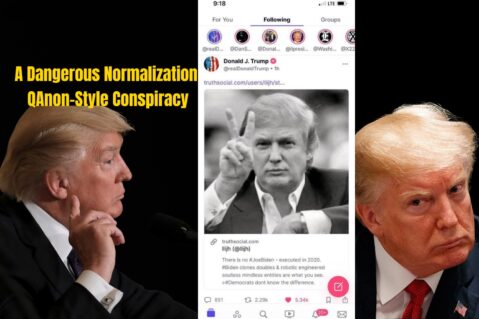President Donald Trump announced on Friday that he is doubling tariffs on imported steel to 50% in a move aimed at strengthening American manufacturing. The announcement came during a high-profile visit to a U.S. Steel mill in the suburbs of Pittsburgh, where the president also promoted a new deal between U.S. Steel and Japan’s Nippon Steel as a “blockbuster agreement” that will keep the company under American control and protect tens of thousands of jobs.
President Trump Tariff Hike Aimed at Boosting U.S. Steel Industry
Standing before a crowd of steelworkers and company executives, President Trump declared that the tariff on imported steel would rise from 25% to 50%, effective June 4. He argued the move was essential to protecting the nation’s critical manufacturing base.
“We’re going to be imposing a 25% increase,” Trump said. “We’re going to bring it from 25% to 50% the tariffs on steel into the United States of America, which will even further secure the steel industry in the United States.” He later confirmed via his Truth Social platform that the same tariff increase would apply to aluminum.
The move marks a return to Trump’s aggressive trade posture and protectionist policies, which were central to his first-term agenda. Administration officials say the measure will prevent foreign dumping of cheap steel, ensure production capacity remains onshore, and safeguard national security.
U.S. Steel-Nippon Partnership Sparks Debate
President Trump also used his visit to celebrate what he called a “blockbuster agreement” between U.S. Steel and Nippon Steel. The deal, still awaiting final approval, reportedly includes $14 billion in investment and promises to retain U.S. Steel’s headquarters in Pennsylvania.
“This storied American company stays an American company,” Trump said, noting that every worker at U.S. Steel would soon receive a $5,000 bonus and that all facilities and blast furnaces would remain fully operational for at least a decade. “There will be no layoffs and no outsourcing whatsoever.”
The announcement marks a significant reversal from Trump’s earlier opposition to the merger during the 2024 campaign. Now, the president is championing the deal as a win for American workers and a strategic partnership under U.S. oversight.
“Golden Share” Clause Promises U.S. Oversight
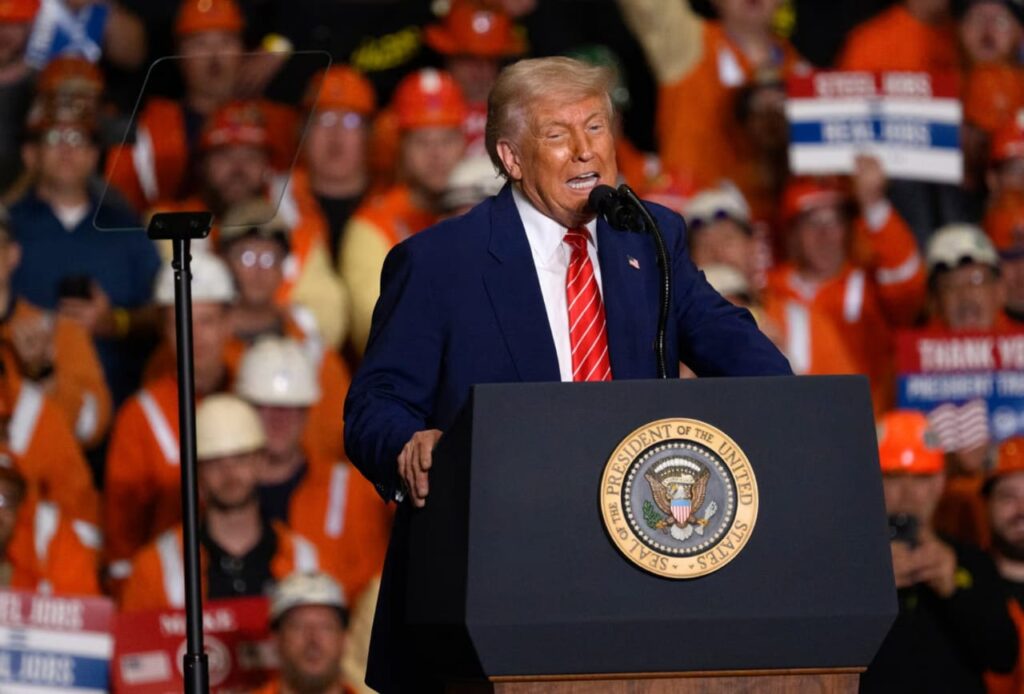
Details of the U.S. Steel-Nippon deal remain sparse, but Pennsylvania Senator David McCormick, a Republican, revealed this week that the agreement includes a “golden share” provision that gives the U.S. government special oversight powers.
“It’s a national security agreement that will be signed with the U.S. government,” McCormick said in a CNBC interview. “There’ll be a golden share, which will essentially require U.S. government approval of a number of the board members.”
According to McCormick, the deal ensures U.S. Steel will have an American CEO and a majority of American board members. However, questions remain about whether the golden share implies partial U.S. ownership or simply veto power over key decisions.
Union Pushback: “Flashy Promises” and No Consultation by Trump administration
Despite the administration’s optimism, the United Steelworkers union expressed deep skepticism. Union President David McCall criticized the lack of transparency and said labor leaders were excluded from negotiations.
“We cannot speculate about the meaning of the ‘planned partnership’ or the ‘golden share,’” McCall said in a Friday statement. “There is a vast difference between public relations and putting commitments in writing.”
The union continues to oppose the sale to Nippon, arguing that foreign ownership puts American jobs at risk and that vague commitments are no substitute for enforceable guarantees. Union leaders have demanded any final agreement be scrutinized with worker interests at the forefront.
Economic and Political Stakes in Pennsylvania
Trump’s visit to the Pittsburgh area, a region steeped in steelmaking history and electoral importance, was both an economic and political message. Pennsylvania remains a crucial swing state in the 2024 campaign, and protecting local industry is central to Trump’s pitch to working-class voters.
U.S. Steel currently employs about 22,000 people, with more than 14,000 in North America. Without a merger, the company had warned it might shift away from traditional blast furnace operations and possibly relocate its headquarters, endangering thousands of jobs in the process.
With the new agreement and enhanced tariffs, Trump vowed to reverse that trajectory. “You’re going to be very happy,” he told the crowd. “There’s a lot of money coming your way.”
Next Steps: Deal Still Awaits Final Approval
Though President Trump praised the agreement, he acknowledged on Friday night that he has yet to approve the final terms. “We haven’t seen that final deal yet,” he told reporters after returning from the mill visit.
The outcome of the deal could set a precedent for future foreign investments in strategic U.S. industries. As it stands, many questions linger—about the scope of U.S. control, the enforceability of worker protections, and the political implications of aligning with a foreign steelmaker.
For now, Trump’s strategy appears aimed at shoring up American industrial power while presenting a re-election narrative focused on economic nationalism and job protection. The coming weeks will determine whether the promises made on the campaign trail are fully realized in policy.

